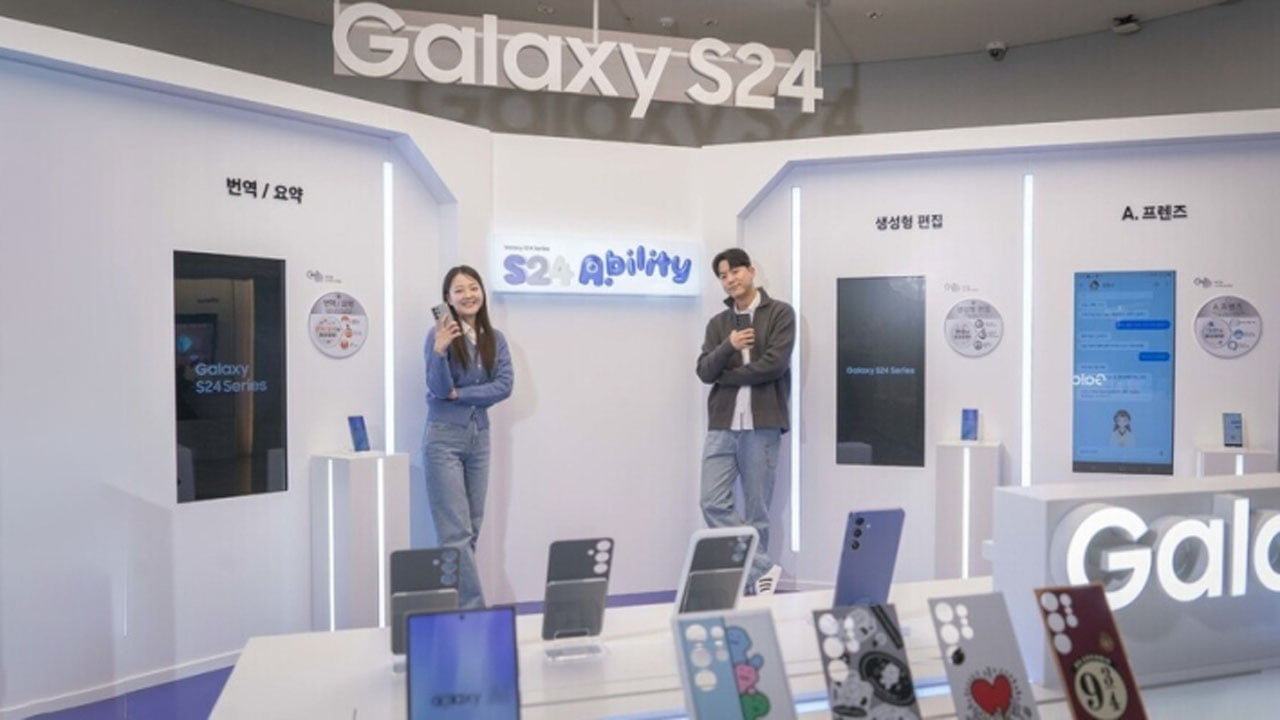Galaxy S24 Public Subsidy of 500,000 Won

Samsung Galaxy S24 public subsidy of 500,000 won! Recently, a co-worker asked me this question. Even if you receive a terminal subsidy, you have to pay more than 1 million won for the basic model. This is a question I asked as if I was frustrated because it was difficult to come up with, and thought, ‘But I’ve been in the telecommunications field for nearly 30 years, so I wonder if there’s a ‘secret’.’
As always, I sent a reply saying, “The best way to use a cell phone is to choose a product with the right performance when you really need it and use it well.” The reply was, “This is the way a doctor speaks to a patient.” Unless you go back to the past (before Galaxy S24 unpacking) like the main character in the popular drama ‘Marry My Husband’, who knows when the cost of switching to Galaxy S24 will be the lowest?
However, looking at the government’s attitude towards the mobile communication industry these days and the competition among the three mobile communication companies for publicly announced subsidies, the classic prescription of ‘If it is not urgent right away, wait a little longer and change’ seems to be correct. Last month, the government announced that it would push for the abolition of the ‘Act on the Improvement of Mobile Communications Terminal Device Distribution Structure’ (hereinafter referred to as the Mobile Communications Terminal Device Distribution Act), which prevented the granting of handset subsidies (subsidies) exceeding the pre-announced amount in the name of market stabilization and prohibition of discrimination against subscribers.
Contrary to the purpose of enacting the law, competition in rates and investment in upgrading communication networks has not occurred, but rather, rates and terminal prices are rising together, increasing the burden of household communication costs. The government further continues to ask mobile carriers to increase terminal subsidies and to terminal suppliers to lower the threshold for purchasing and replacing terminals. Is it because of government pressure, or is it because they are afraid of criticism for enriching themselves while ignoring the purpose of the Dantong Act? Mobile carriers are racing to increase handset subsidies.
According to the mobile communications industry on the 6th, the publicly announced subsidy for the Galaxy S24 series jumped up to 500,000 won. The subsidy announced by mobile carriers when they started launching the Galaxy S24 on the 26th of last month is up to 230,000 won. The subsidy for the highest price plan of 120,000 to 130,000 won per month was only 200,000 to 230,000 won for each business operator, but it more than doubled in 10 days. Adding the additional subsidy to retailers (15% of the publicly announced subsidy), the subsidy received by consumers reaches a maximum of 575,000 won.
The place with the largest amount of publicly announced subsidies is LG U+ ( LGU +). Depending on the plan, it ranges from 155,000 to 500,000 won. This company announced the Galaxy S24 subsidy as a maximum of 200,000 won on the 26th of last month, but raised it to a maximum of 450,000 won on the 2nd, and then again to a maximum of 500,000 won. An official from this company said, “Competitors have raised the price and raised it again.” SK Telecom’s ( SKT ) publicly announced subsidy for the Galaxy S24 is up to 489,000 won.
Compared to the maximum publicly announced subsidy of 200,000 won on the 26th of last month, it increased 2.5 times in 10 days. During the same period, KT ‘s publicly announced support fund was also increased from the maximum of 200,000 won to 480,000 won. Mobile carriers can change publicly announced information such as device subsidies every Tuesday and Friday in accordance with government guidelines.
If you listen to the words of telecommunication company officials, the competition for handset subsidies between the three telecommunication companies takes the shape of a ‘game’. This is because subscribers are flocking to businesses that provide even just 10,000 won more in subsidy. The idea is to offer a higher subsidy to divert subscribers from flocking to competitors. As competition for subsidies took place twice a week, the starting amount more than doubled in just 10 days. Moreover, once competition begins, no operator can stop or get out of the ‘subsidy race’ first unless they are prepared to lose quality subscribers.
Previously, the Dantong Act prevented overheating of competition for subsidies. As competition among mobile carriers for subsidies for popular new terminals seemed to be intensifying, the Korea Communications Commission poured cold water on them by issuing a ‘warning message’ that resembled a notice of on-site inspections. This time things are different. The government steps in and adds gasoline and fuels competition.
Mobile carriers have enough ammunition. SK Telecom, the No. 1 operator, recorded an operating profit of 1.7532 trillion won last year, an 8.8% increase from the previous year. Profit was maximized by reducing facility investment by about 10% to advance communication networks, such as expanding the radius of 5G mobile communication services and improving quality. LG U+ and KT will announce last year’s performance on the 7th and 8th, respectively. It is said that mobile carriers are also reviewing compensation plans for customers who contracted to purchase products before raising the publicly announced subsidy.
See More:
Galaxy S24 Subsidy Increased All At Once – Government Pressure Worked
Tesla Fell To 10th Place In Market Cap Target Price Down
Leave a Comment